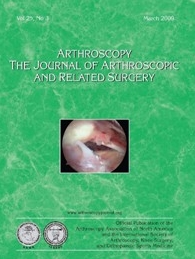
SHOULDER & ELBOW
Rotator cuff repair: Similar DASH but better healing in large tears with microfracture
This report has been verified
by one or more authors of the
original publication.
Arthroscopy. 2013 May;29(5):802-10. doi: 10.1016/j.arthro.2013.01.019. Epub 2013 Mar 21
80 patients suffering from a tear in their rotator cuff were randomized to receive either a standard single row tendon repair or a standard tendon repair including microfracture of the greater tuberosity (a marrow-stimulating technique). Results indicated similar Disability of the Arm, Shoulder and Hand (DASH) scores at a mean follow-up of 28.1 +/- 3 months and similar tendon healing (or structural integrity) at 1 year post-surgery between groups. However, for larger tears (those involving supraspinatus and infraspinatus), improved healing was observed in the microfracture group.
Unlock the full ACE Report
You have access to {0} free articles per month.Click below to unlock and view this {1}
Unlock NowCritical appraisals of the latest, high-impact randomized controlled trials and systematic reviews in orthopaedics
Access to OrthoEvidence podcast content, including collaborations with the Journal of Bone and Joint Surgery, interviews with internationally recognized surgeons, and roundtable discussions on orthopaedic news and topics
Subscription to The Pulse, a twice-weekly evidence-based newsletter designed to help you make better clinical decisions
Exclusive access to original content articles, including in-house systematic reviews, and articles on health research methods and hot orthopaedic topics
Or upgrade today and gain access to all OrthoEvidence content for just $1.99 per week.
Already have an account? Log in


Subscribe to "The Pulse"
Evidence-Based Orthopaedics direct to your inbox.
{0} of {1} free articles
Become an OrthoEvidence Premium Member. Expand your perspective with high-quality evidence.
Upgrade Now













































































